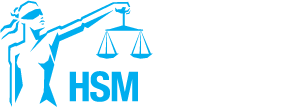Human Source Management - The Source Management Team
In this article we provide the basic structures needed to manage confidential informants. As is normal in all of these articles we refer to someone carrying out this role as a human source. Human sources are not managed by individual officers, they are managed by teams working inside an identified system. A Source Management Team comprises three distinct roles:
The Handler.
The Controller.
The Authorizing Officer.
Handlers are responsible for the day-to-day management of the source. They will know the source well, regarding their capabilities as a source and their circumstances. It is the Handler that meets with the source and that is responsible for motivating that source to produce the maximum amount of quality information. It is up to the Handler to identify any risks that there may be to the safety of the source, and the integrity of the information obtained. The Handler is responsible for ensuring that the majority of records are completed. Generally speaking, a Handler can manage up to a maximum of ten sources at any one time. However, if any of them are particularly active this number will be reduced. When considering this number, it must be remembered that co-handling a source counts the same. It is the total number of sources that the Handler is involved with.
Controllers are responsible for overseeing the management of the source. They must always be at least one rank above the Handlers. They are there to ensure that the Handlers are functioning properly and to ensure that the management of the source is done ethically and legally. Controllers should be intrusive in their supervision. They should know everything that is going on with each source they are responsible for. They will meet with each source as a matter of routine, normally at the commencement of the relationship and on occasions thereafter. They should not become the ‘third Handler’. They must be careful that there is separation kept between them and the source. The source should be aware that they are talking to ‘the boss’. The Controller checks all paperwork submitted by the Handlers. The Controller is responsible for identifying all tasks that are to be given to a source. If someone in the agency wants the source to be tasked to gather information in support of an investigation, the Controller decides if and how it should be done. The Controller is also responsible for approving the payment of any expenses to a source up to a designated limit. Where there is an issue with any source it is the Controller’s responsibility to notify the Authorizing Officer. The maximum number of sources that a Controller can supervise at any one time is twenty. However, if any of the sources are particularly active this number will be reduced. Furthermore, the Controller cannot be expected to be on call 24/7. There must be a Deputy Controller who can help during periods of leave or sickness.
The Authorizing Officer is responsible for authorizing all sources on behalf of the agency, save for when there is an exceptional risk in managing a particular source. In deciding to authorize a source the Authorizing Officer must look across the whole source program and decide if there are sufficient resources to manage all the sources that are registered. If they are at their limit registering another source may be a foolish option. The Authorizing Officer is also responsible for deciding any financial remuneration that is to be paid to a source regularly. There is no requirement for the Authorizing Officer to be aware of the daily activities of any source. Only when there are problems that require their intervention, should they become involved. A full time Authorizing Officer should be responsible for no more than fifty sources.
A Source Management Team
Dedicated Source Units
Human sources should be managed by Dedicated Source Units where the sole role of the officers involved is to manage human sources. They are all properly trained and should be the only ones in the agency allowed to manage human sources. We can see how they will operate in the management of several sources.


